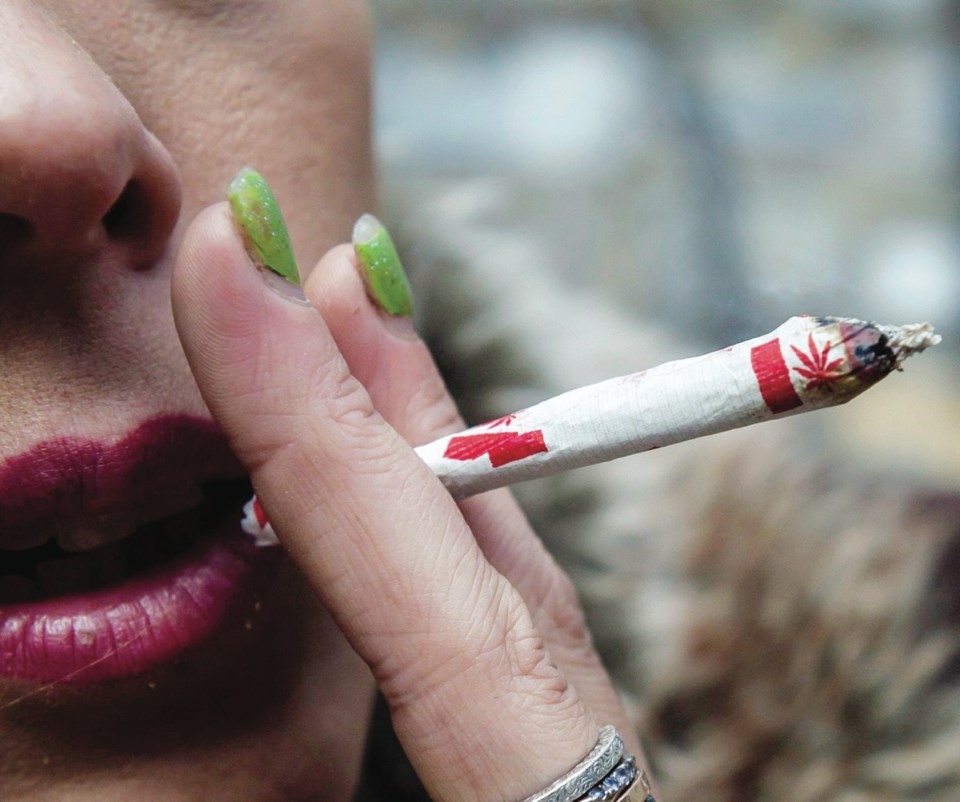Now that marijuana consumption has been made legal, there are some health implications that parents of teenage children might consider. Over the past two decades, studies in several countries have found a link between the ingestion of THC — the active ingredient in cannabis — and psychosis, schizophrenia and violence.
To give one example, a 2002 report in the British Medical Journal found that kids who smoked marijuana before age 16 were four times as likely to develop schizophrenia as people who had never used the drug.
You might say, well, those kids were self-medicating. That is, they had already developed symptoms of the disease, and were using cannabis to suppress them. There is probably a small amount of truth in that.
However, the study tested this hypothesis by excluding youngsters who had previously exhibited symptoms of psychosis. Even then, the data showed that disease-free teenagers were three times more likely to develop schizophrenia later on.
The legal regime now in effect precludes the sale of marijuana to anyone under 19. So we’re good, right?
Well, anyone who supposes that kids won’t get their hands on the stuff once it becomes readily available is dreaming. But there is a good deal more evidence linking marijuana to mental illness, and not just in adolescents.
A 2017 report by the U.S. National Academies of Sciences, Engineering and Medicine showed that there is a strong relationship between marijuana use and various mental disorders. It also found a higher risk of depression and suicide among frequent consumers.
If these results are correct, we should see a corresponding increase in hospital admissions for psychosis-like symptoms as marijuana consumption rises. So have we?
A former writer for the New York Times, Alex Berenson, examined this question in his book Tell Your Children. (I’m indebted for much of the material in this piece to an article Stephanie Mencimer wrote for the American publication Mother Jones. Mencimer reproduced some of Berenson’s findings.)
Berenson found that between 2006 and 2014, marijuana use rose 50 per cent in the U.S. Over the same period, ER admissions for psychosis tripled, from 30,000 to 90,000.
Perhaps this is just a U.S. phenomenon? It appears not. Reports in New Zealand and the Netherlands examined marijuana consumption over several decades and also revealed a connection to mental illness.
Interestingly, there is a long history of researchers finding a link between cannabis and psychosis, some as early as the 19th century. More recently, a Swedish study looked at young adults who had been conscripted into military service. Here, too, cannabis use in adolescence was found to double the risk of schizophrenia.
I readily concede that other research has been less alarmist. But we have to be conscious of the backdrop to much of this work.
Until recently, marijuana use was illegal in most western countries. What studies were done inevitably ran up against this barrier. They were, in effect, as much anecdote as science.
Only in recent years, as the legal constraints weakened and were finally removed, has it become possible to take a more methodical look at the facts.
There is also the reality that when folks of my generation experimented with marijuana, the stuff they were smoking was far weaker than the contemporary product. Those reefers that got passed around university dorms in the 1960s and ’70s contained between one and two per cent THC. Much higher doses are now commonplace.
In one respect, the obvious answer is a far more intense look at the effects of marijuana on mental health, particularly in adolescents. But that will take time, and time is the one thing young kids don’t have.
For now, the message to parents is clear. Do everything you can to keep this stuff away from your children.



